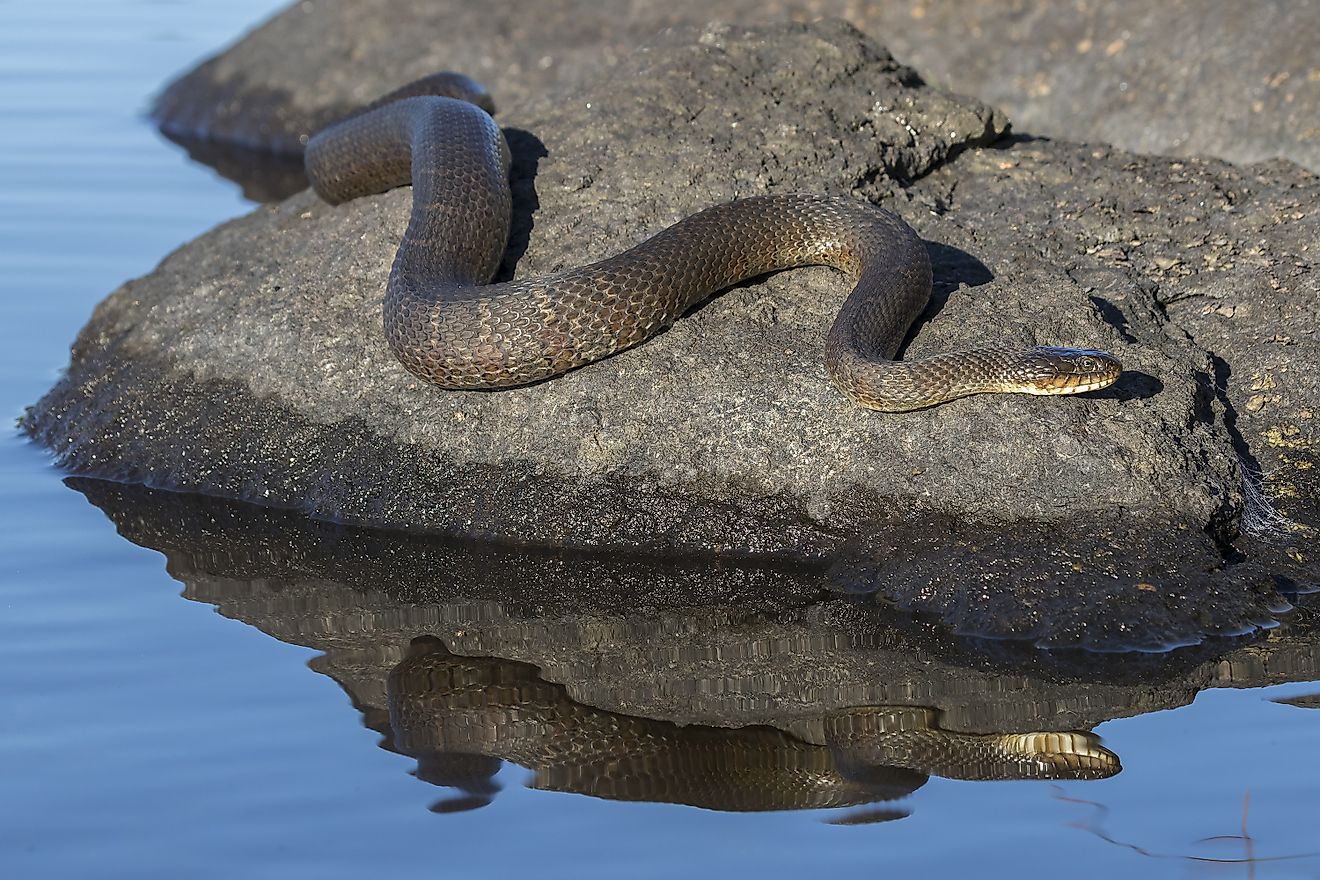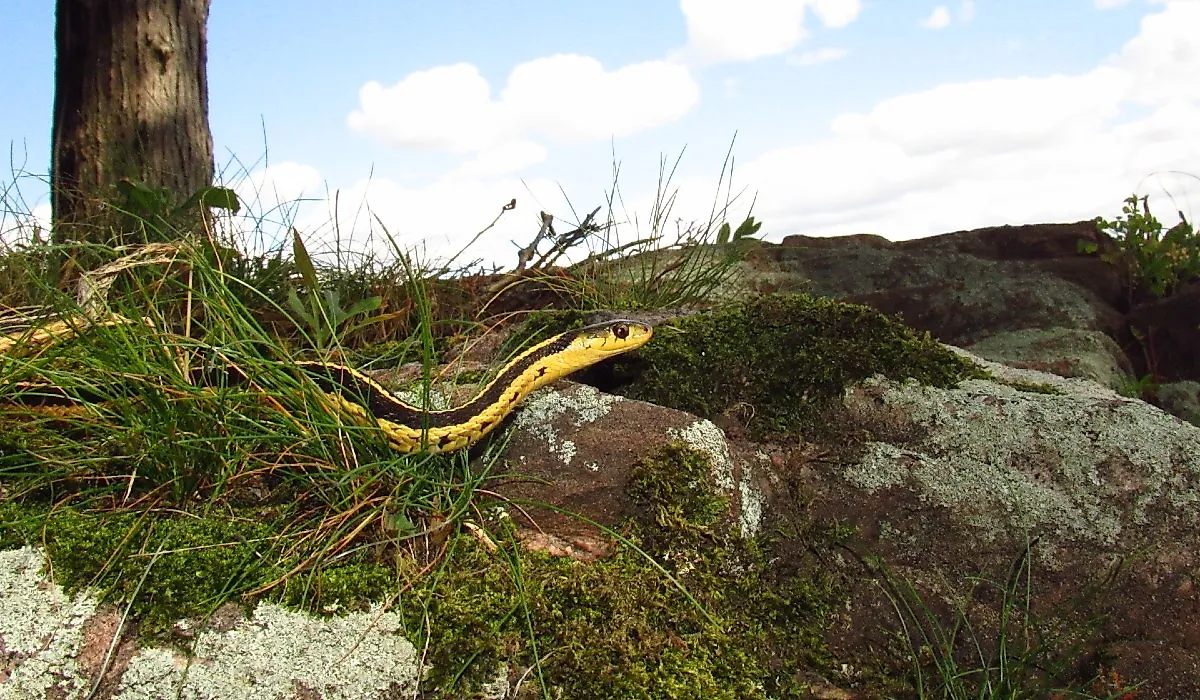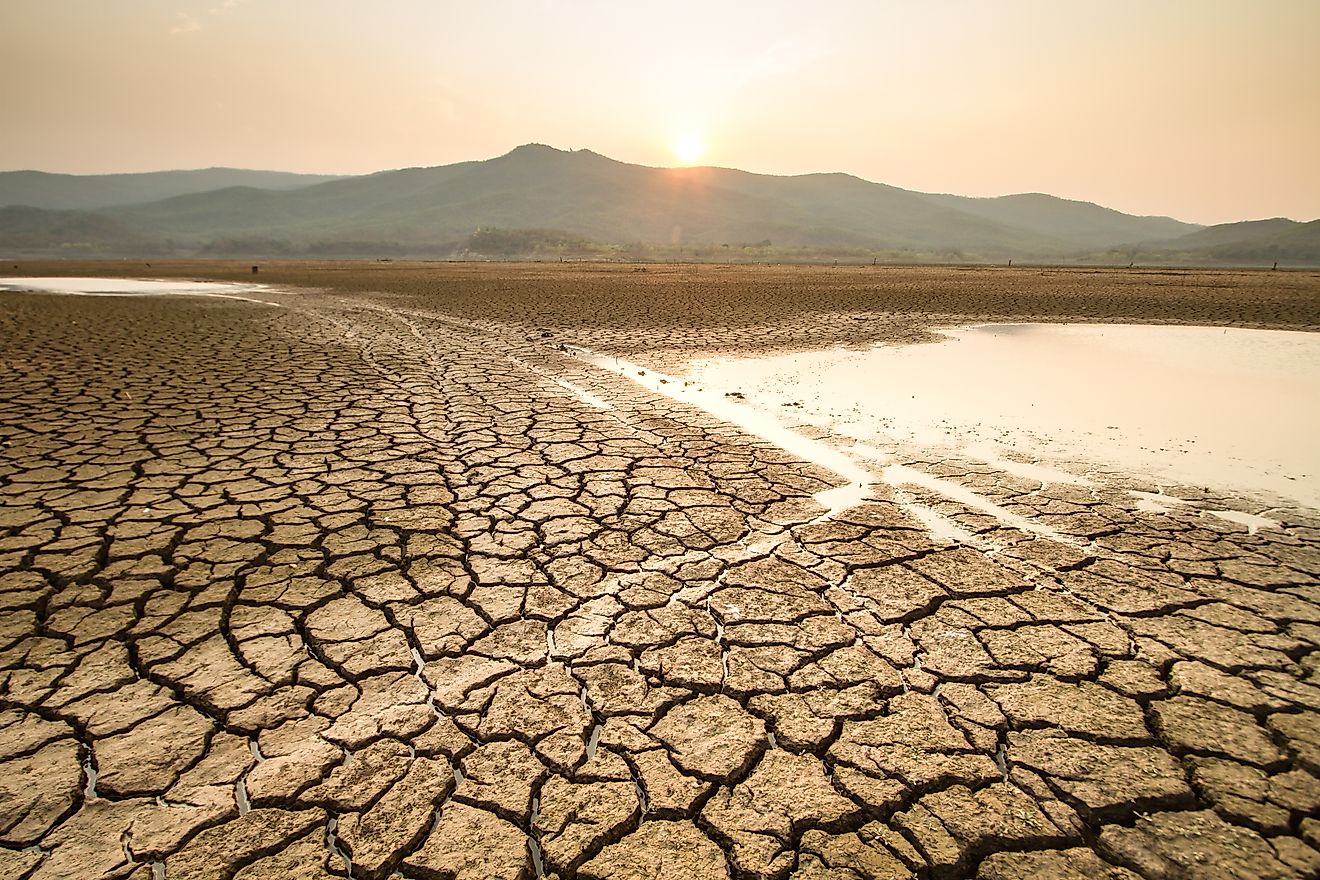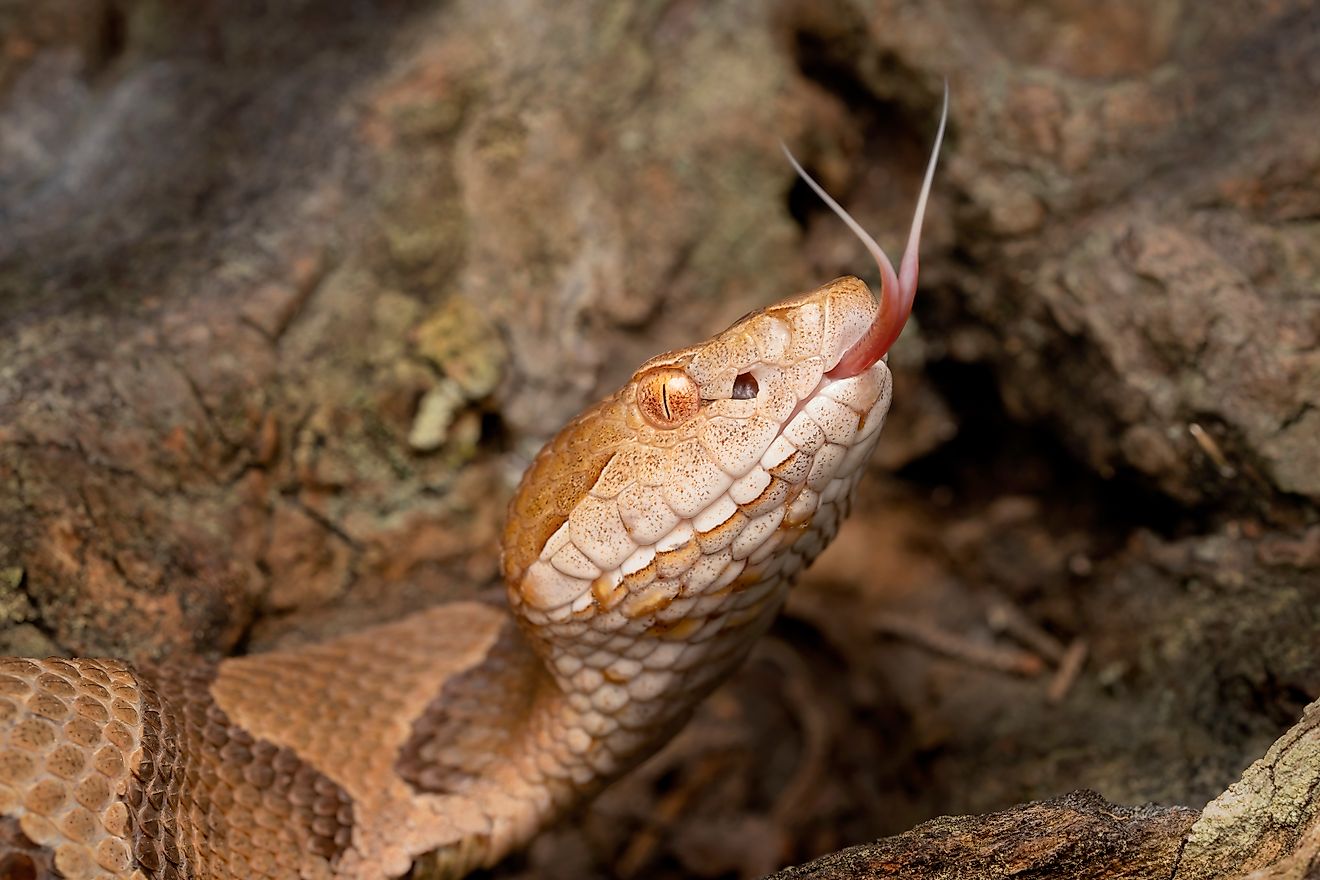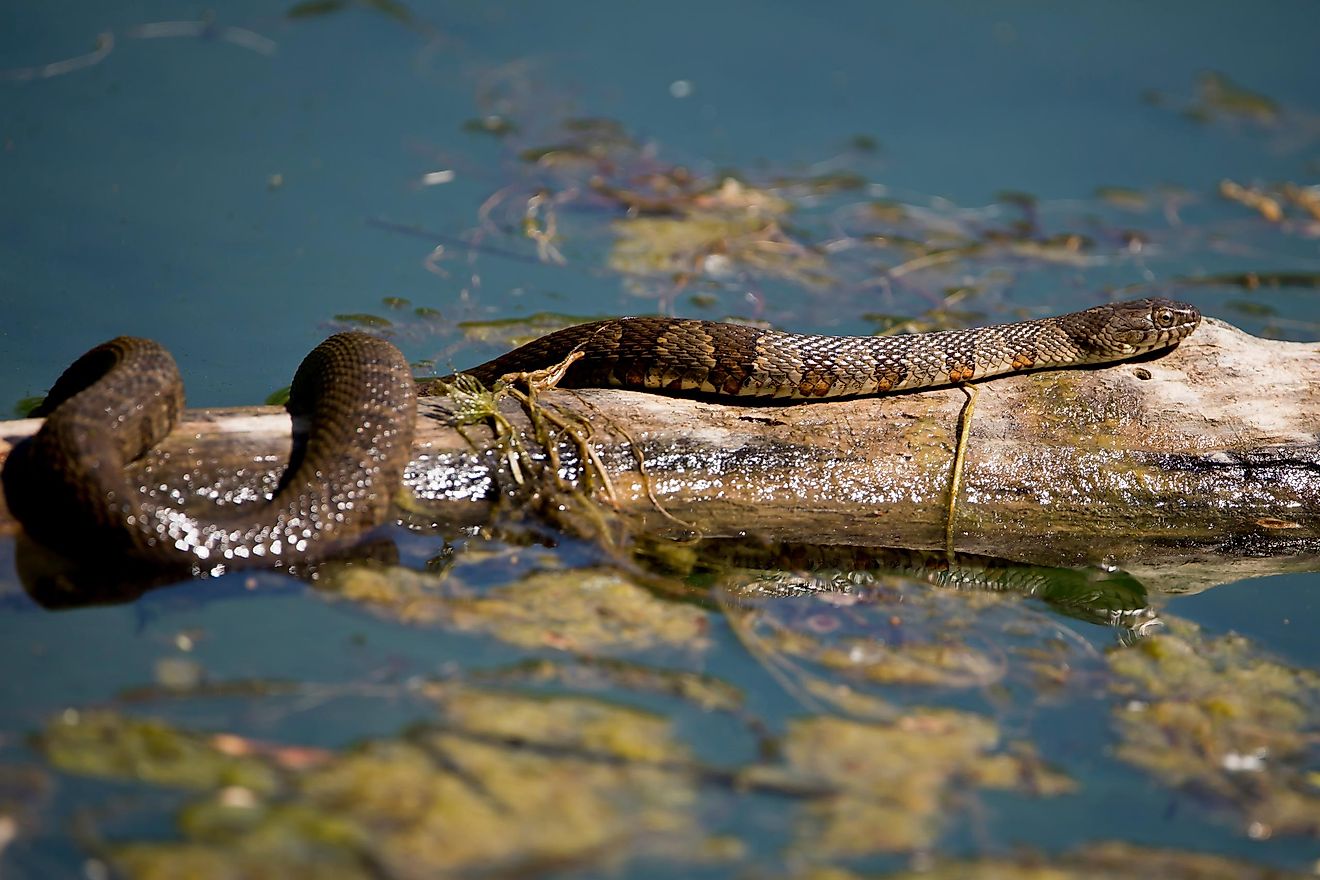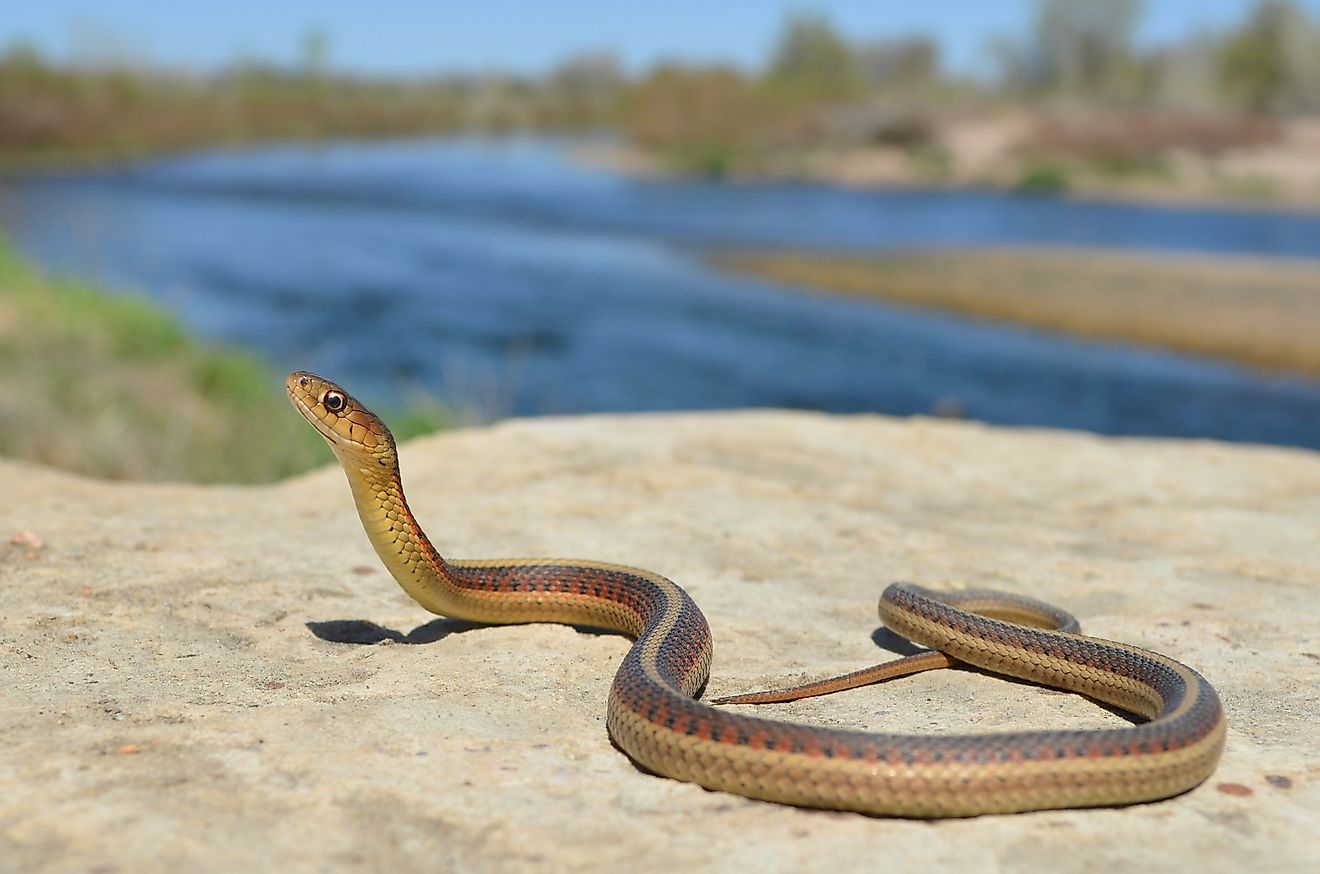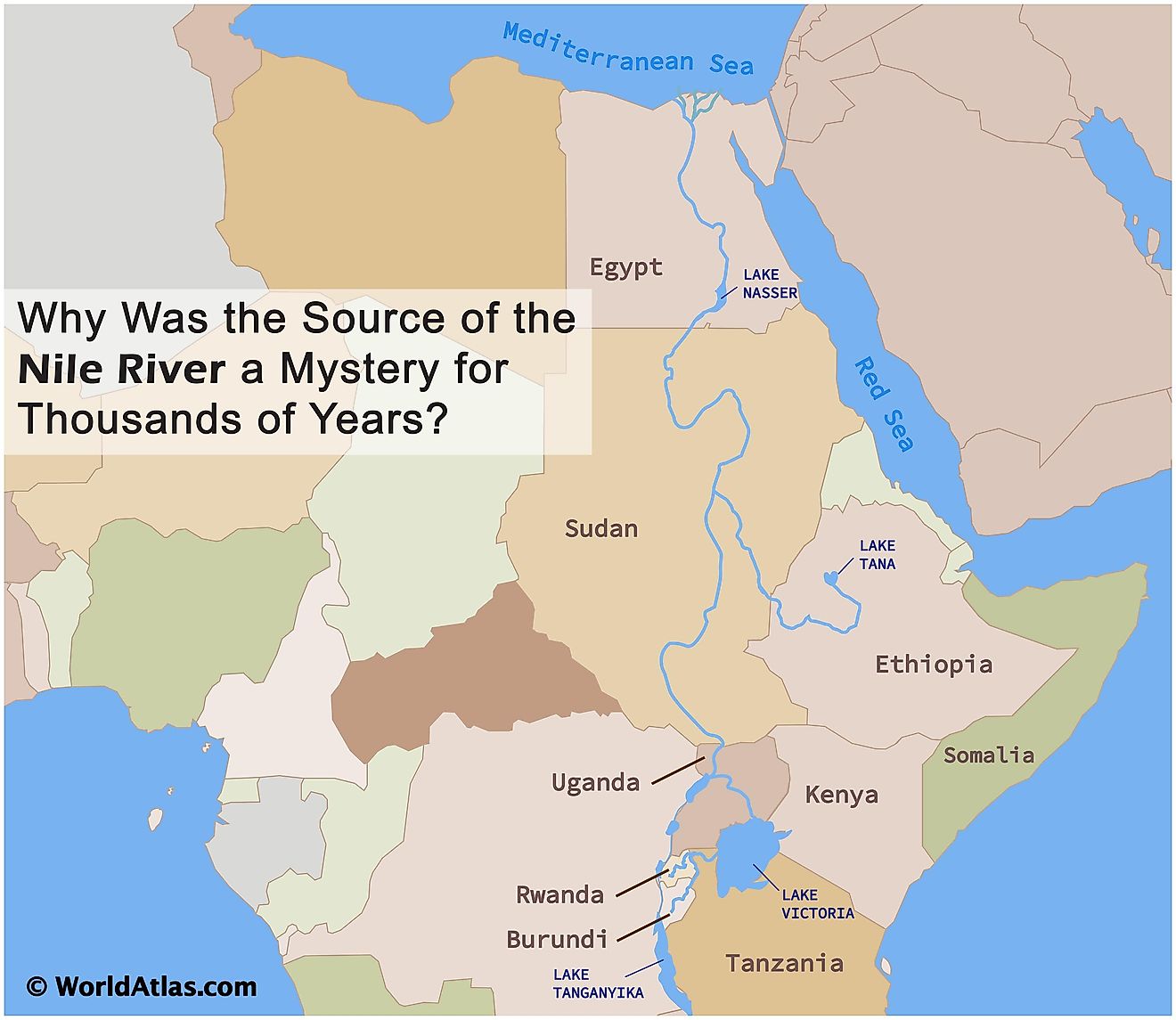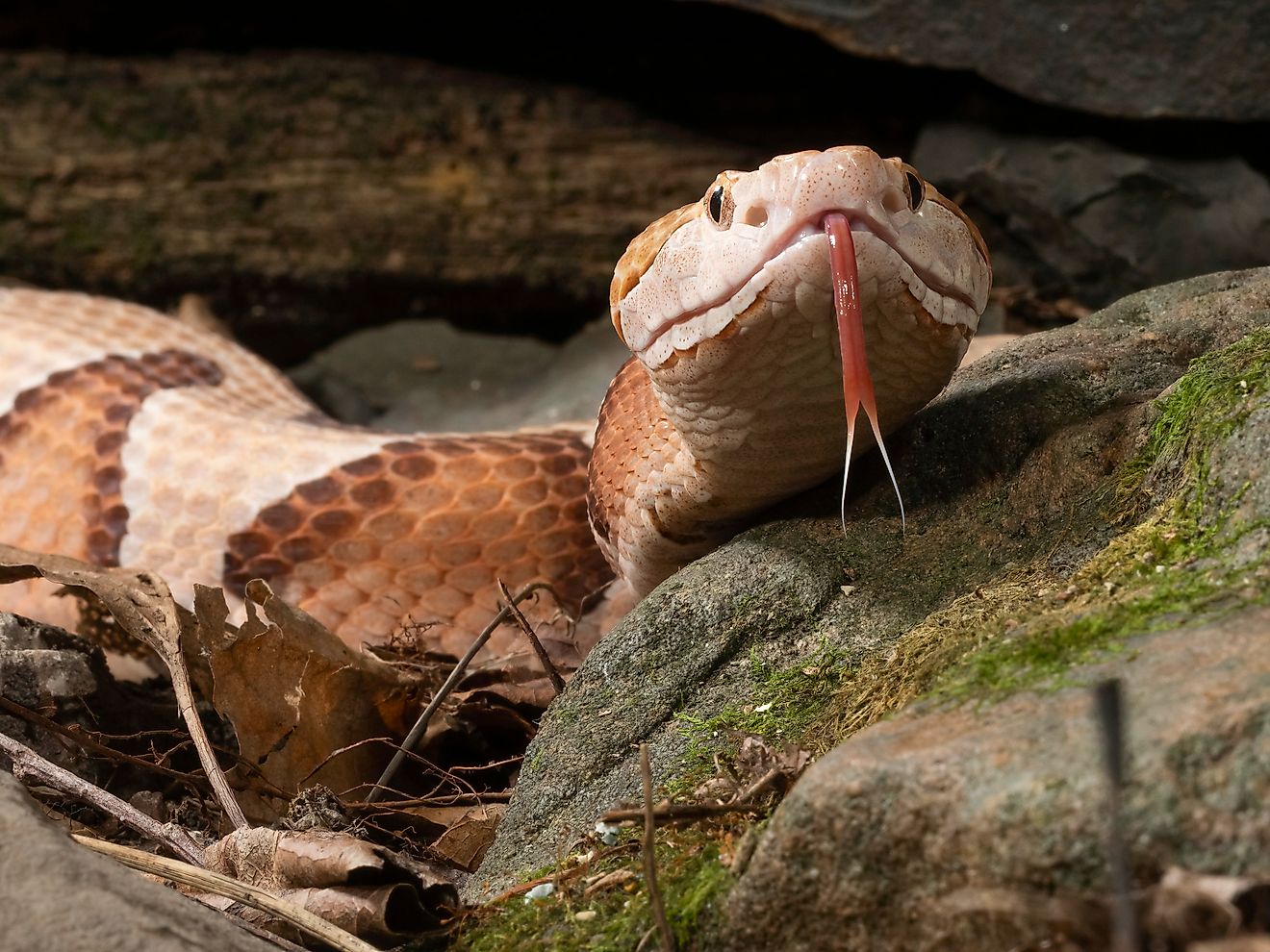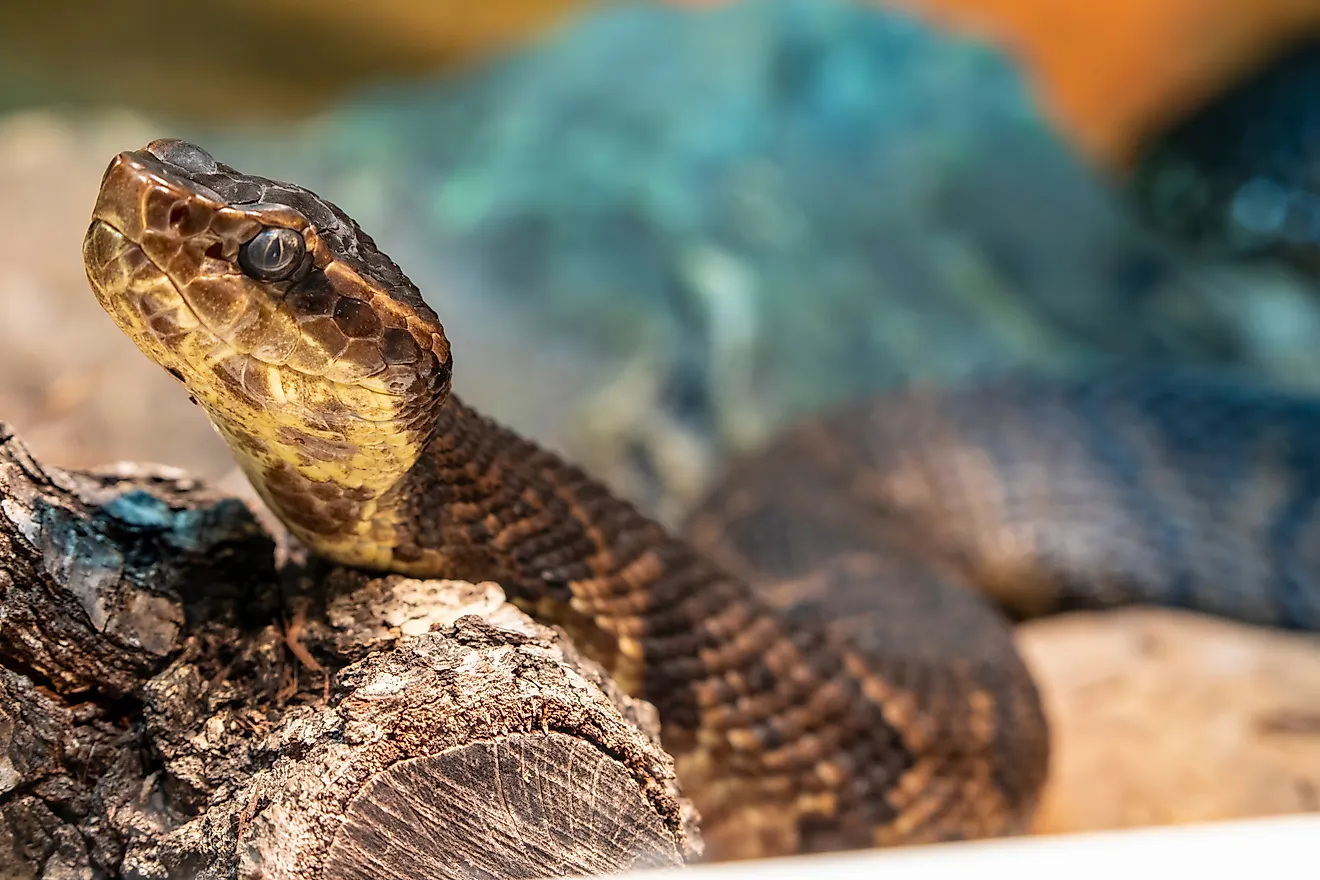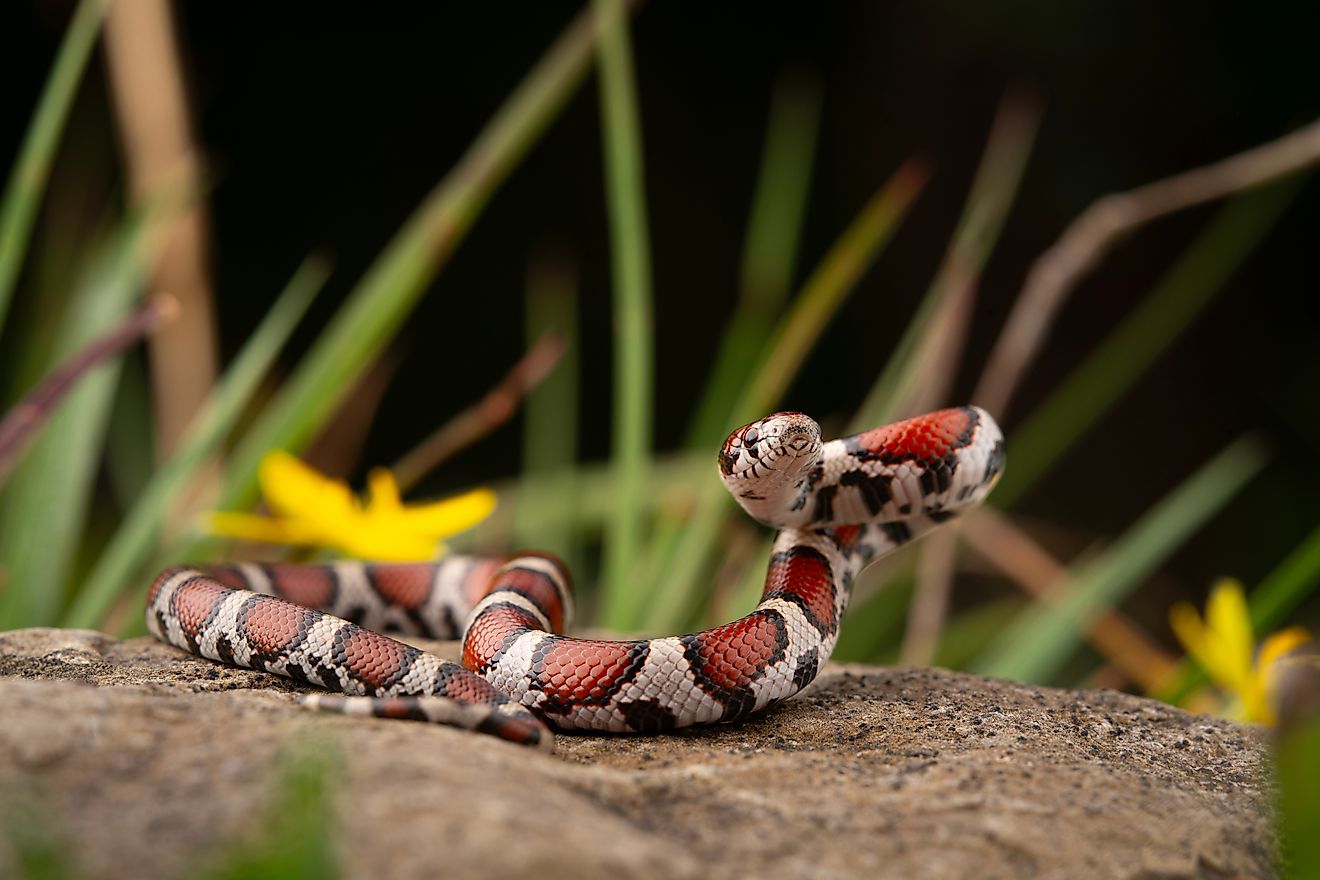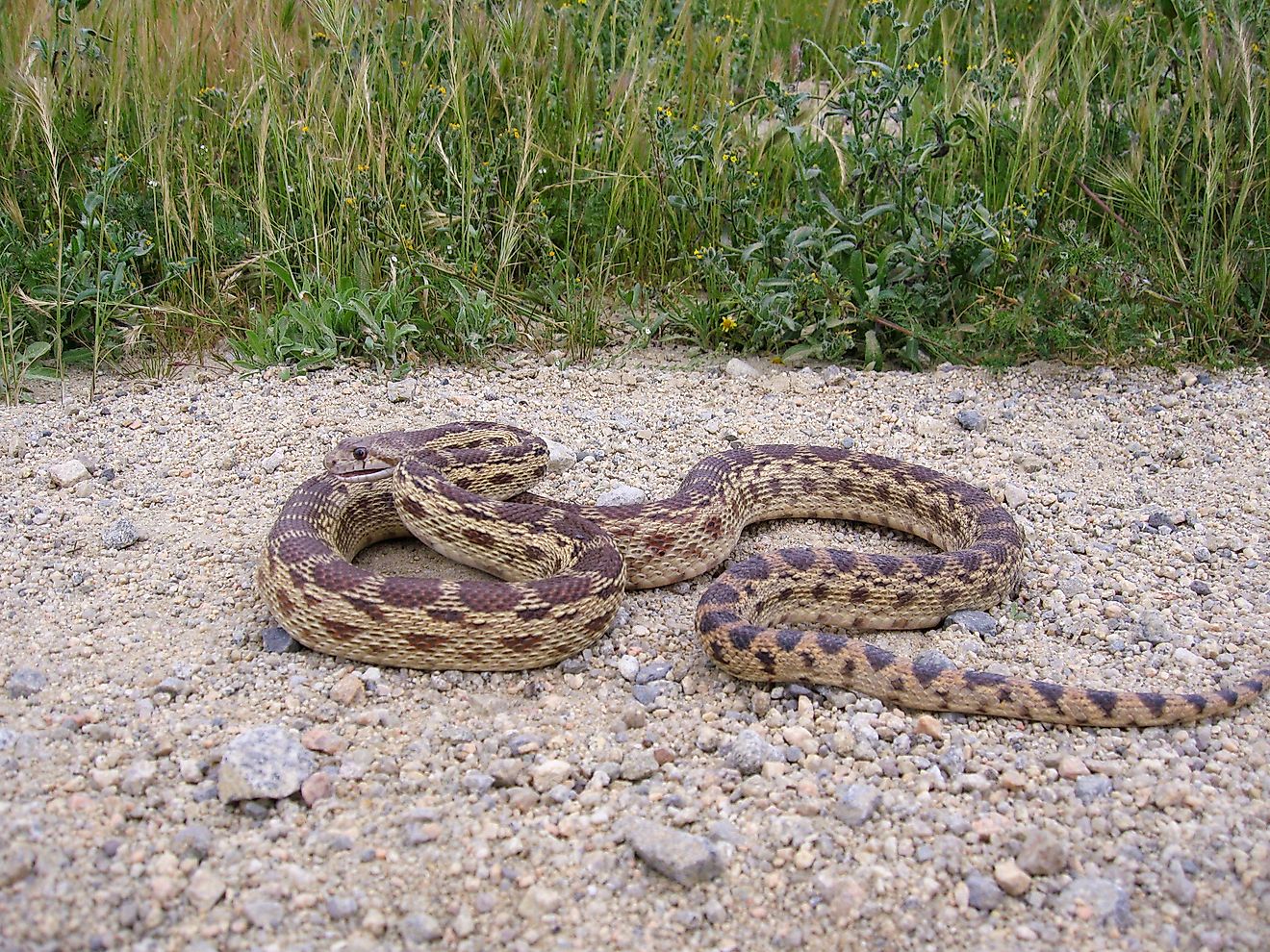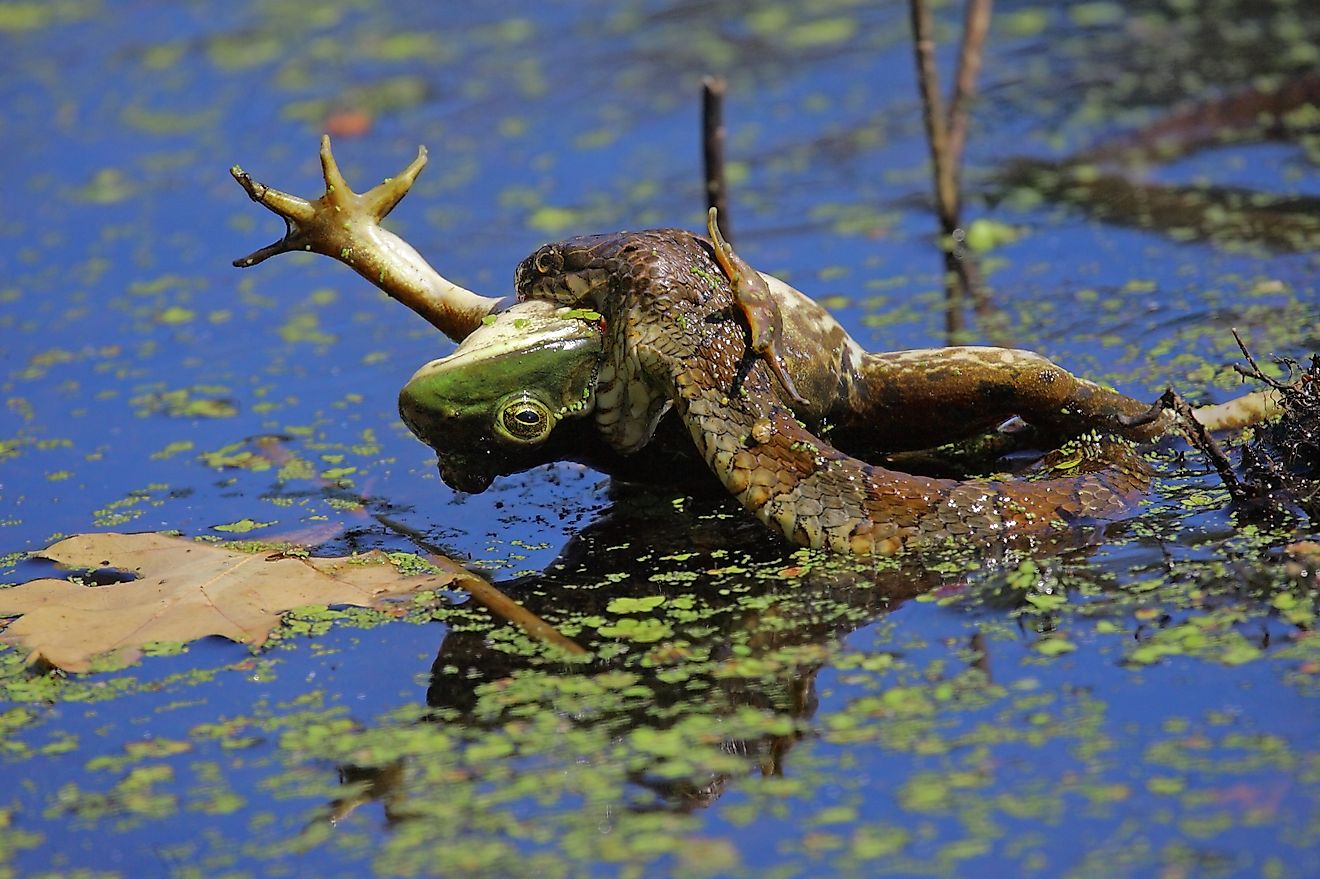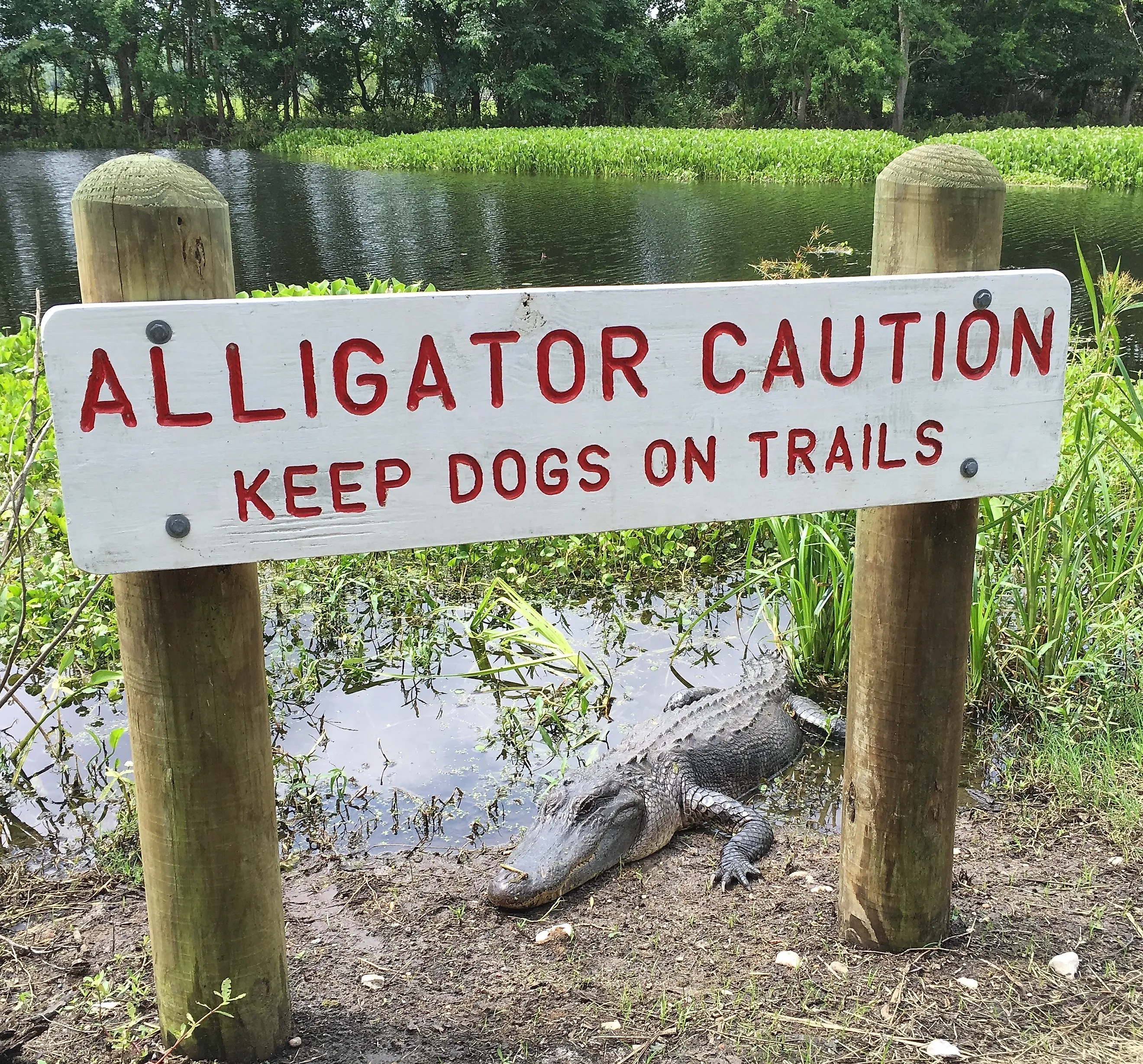
8 Most Alligator Filled Rivers In Texas
In the alligator sweepstakes, Texas takes third place. With up to an estimated half million alligators gliding through its bayous, marshes, and rivers, the Lone Star State proves it can hold its own against the swamps of Louisiana and the Florida Everglades. It hasn't always been this way, however. Alligators were plentiful in Texas until the 1950s, when hunting and habitat loss nearly led to their disappearance. In 1967, the American alligator was listed as an endangered species by the U.S. Fish and Wildlife Service.
Thanks to the establishment of protected refuges, however, the alligator made a comeback. Fast forward to 1987, and the species was delisted after its populations recovered across the southeast United States. Today, from the Trinity River to the San Bernard, these prehistoric sunbathers are right at home in eight of the most alligator-filled rivers in Texas.
Trinity River
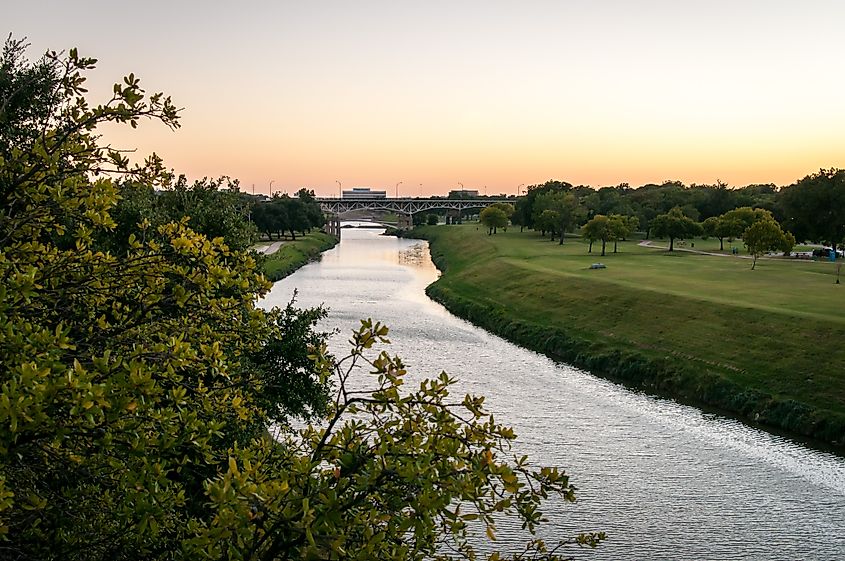
The Trinity River is a winding system that begins in northern Texas and flows for 710 miles into the Gulf of Mexico at Trinity Bay. It is one of the longest rivers in Texas. As the river travels south, it changes as it passes through urban areas like Fort Worth, Arlington, and Dallas, bordered by levees and becoming broader in the middle with oxbows and cypress-lined sloughs. The lower Trinity River turns swampy as it nears the coast, meandering through the bottomland hardwood forests and marshes that make up the Trinity River National Wildlife Refuge and the Jocelyn Nungaray National Wildlife Refuge (formerly the Anahuac National Wildlife Refuge), both vital sanctuaries for coastal Texas wildlife.
The refuge was established in 1963 to provide a habitat for migrating birds and has since been designated a Globally Important Bird Area, Monarch Waystation, and a Western Hemisphere Shorebird Reserve Network Site of International Importance. In addition to being a birding hotspot, the 39,000-acre refuge is a haven for alligator admirers, who will enjoy the 2.64-mile Shoveler Pond Auto Tour Loop, where alligators are abundant year-round. Keep your eyes peeled for gators basking on the levee banks or gliding across the pond.
Neches River
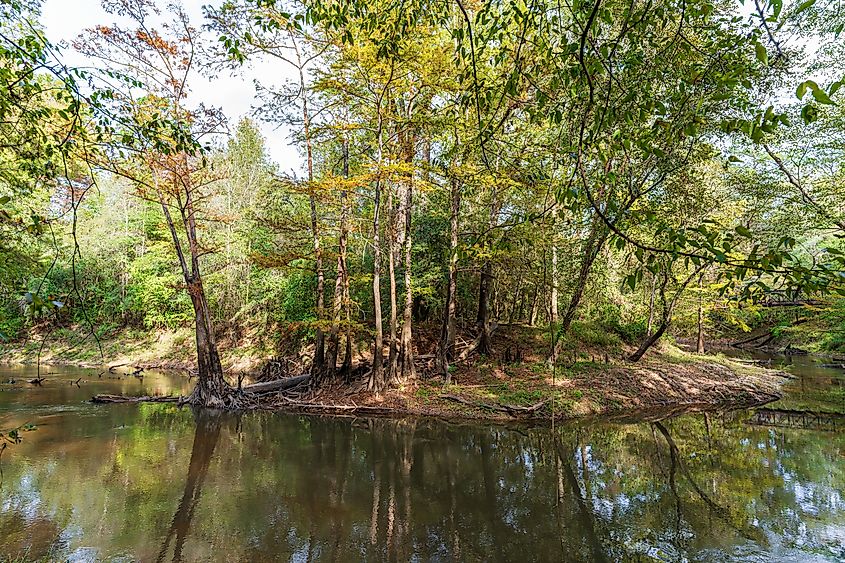
Flowing 416 miles through East Texas, the Neches River is the gateway to the 113,000-acre Big Thicket National Preserve. The preserve isn’t a single park but a patchwork of ecosystems, including swamps, hardwood forests, pine woods, bayous, and even sandy, desert-like ridges, making it a paradise for outdoor adventurers who want to experience many landscapes in one place. There are more than 30 miles of hiking trails and over 20 miles of paddling trails, offering opportunities for backpacking, birding, kayaking, horseback riding, and wildlife viewing in one of the most biodiverse corners of the United States.
Thanks to its diverse ecosystems, the National Preserve hosts an impressive number of species, including 1,320 plant species, 60 mammal species, and 68 reptile species, such as snakes, skinks, lizards, turtles (both aquatic and terrestrial), and, of course, the American alligator. The Big Thicket was established in 1974 and designated a UNESCO Biosphere Reserve in 1981.
Sabine River
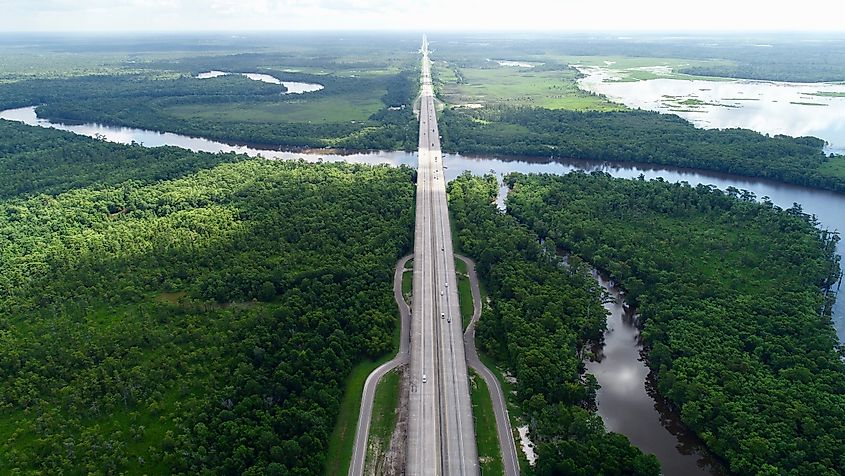
The Sabine River flows about 510 miles from north-central Texas to Sabine Lake on the Gulf of Mexico, creating an aquatic border between Texas and Louisiana for much of its length. Its lower reaches wind through swamps, marshes, and piney woods, creating a prime habitat for snakes and alligators. While Texas isn’t exactly known for its swamps, there’s an area near the Texas-Louisiana border just north of where the river meets the Gulf that is definitely more Louisiana than Lone Star. The 3,300-acre tract known as the Tony Houseman/Blue Elbow Swamp Wildlife Management Area is home to a variety of wildlife, including great blue herons, pileated woodpeckers, and even invasive species like nutria.
Wildlife enthusiasts can explore the Tony Houseman/Blue Elbow Swamp WMA via a 600-foot boardwalk with interpretive exhibits and a scenic deck offering an overview of the wetlands and cypress forest. In addition to American alligators, the swamps are home to venomous snakes like cottonmouths, copperheads, coral snakes, and rattlesnakes, so you should practice caution. The boardwalk and swamp are accessed from the Texas Travel Information Center at Mile 1, near Orange, Texas.
San Jacinto River
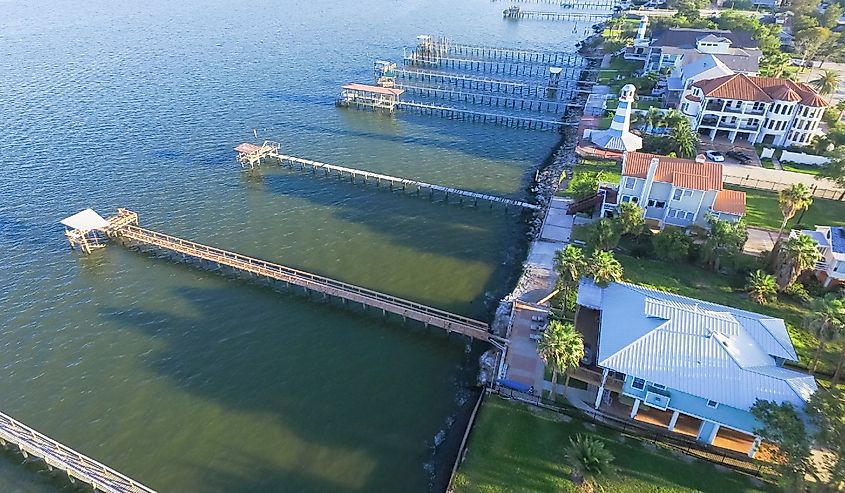
The San Jacinto River flows about 90 miles through southeast Texas, linking a web of bayous that thread through the Greater Houston area before reaching Galveston Bay. Its main tributaries, like the Buffalo Bayou, Greens Bayou, Goose Creek, and Cypress Creek, provide ideal habitats for American alligators, especially in the lower reaches near Houston.
For history lovers, paddlers, and wildlife enthusiasts alike, few experiences compare to paddling in the shadow of the San Jacinto Monument, where soldiers fought for Texas independence. Launch your kayak from the Baytown Nature Center and start exploring the scenic waterways. River caching, a water-based twist on geocaching, is a popular challenge along the San Jacinto River. Just keep a watchful eye around the bayous and secluded marshes for alligators and venomous snakes.
Brazos River
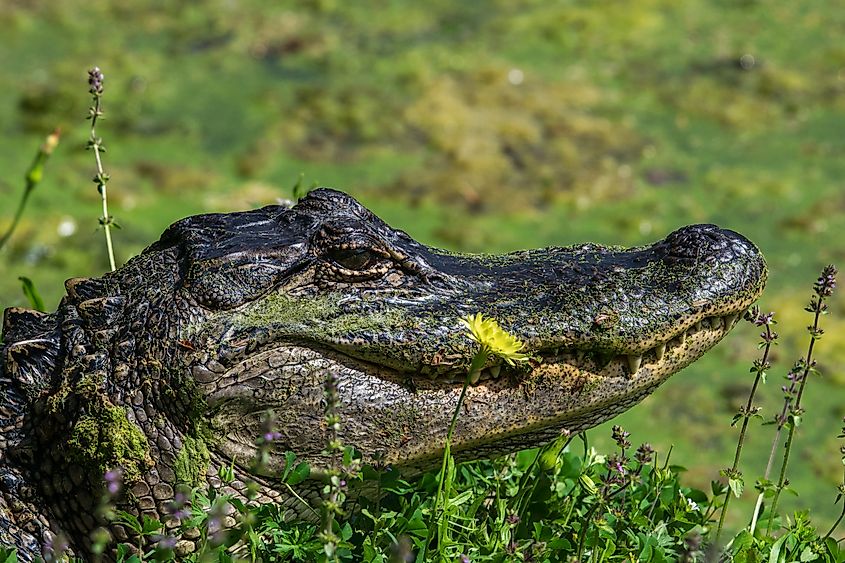
The Brazos River, one of the longest rivers in Texas, flows from northwest Texas to the Gulf of Mexico. As it nears the coast southwest of Houston, the river spreads into a broad floodplain that feeds a patchwork of marshy wetlands and oxbow lakes. About 45 miles southwest of downtown Houston, and 35 miles inland from the Gulf of Mexico, is Brazos Bend State Park.
The park is an ideal escape from the hustle and bustle of Houston, with 37 miles of trails, including the paved Creekfield Lake Nature Trail with interpretive panels, exhibits, and an observation deck, as well as numerous hiking and biking trails around the park’s marshes, sloughs, and lakes. The park is home to hundreds of alligators, and warning signs are posted throughout the park that all dogs must be on leashes no longer than 6 feet for this reason. Stop by the Nature Center to see exhibits on the reptiles that live in the park.
Colorado River
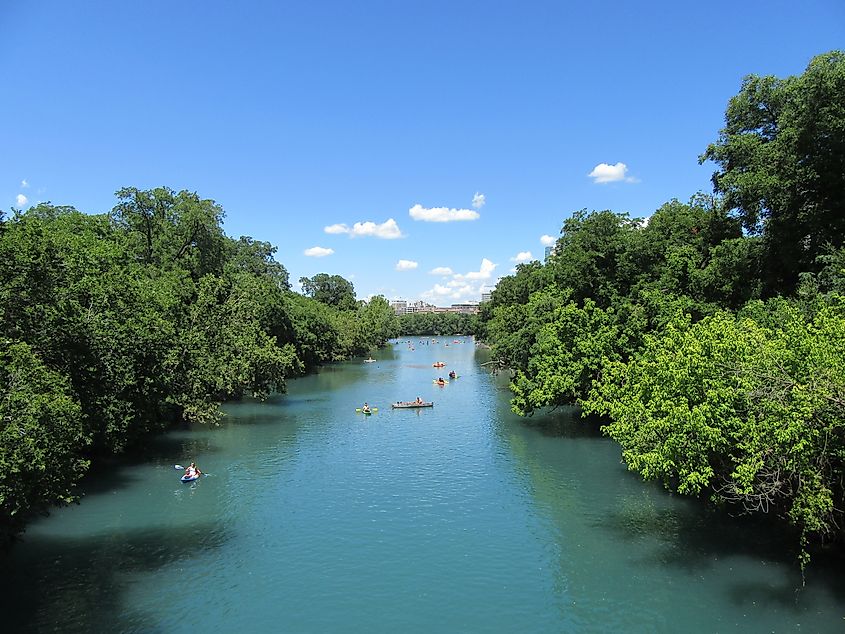
The Colorado River in Texas, not to be confused with the Colorado River in the western part of the U.S., flows from the Texas Panhandle to the Gulf of Mexico at Matagorda Bay. If you’re on the lookout for alligators, your best bet is along the lower Colorado River, where the water flows through coastal prairies, wetlands, and marshes, and the climate is warm and humid year-round.
With more than 7,500 miles of creeks, streams, and rivers in the Colorado River Basin, the landscape is a haven for wildlife spotting. At the mouth of the river, you’ll find the Matagorda Bay Nature Park, where the Colorado spills into the Gulf. Spread across 1,334 acres of protected land, the park offers birding, boating, and hiking opportunities. You can even stay overnight in one of the park’s Airstream trailers or beach bungalows, and rent a kayak to paddle through the wetlands with the chance of seeing gators sunning on the banks.
Guadalupe River
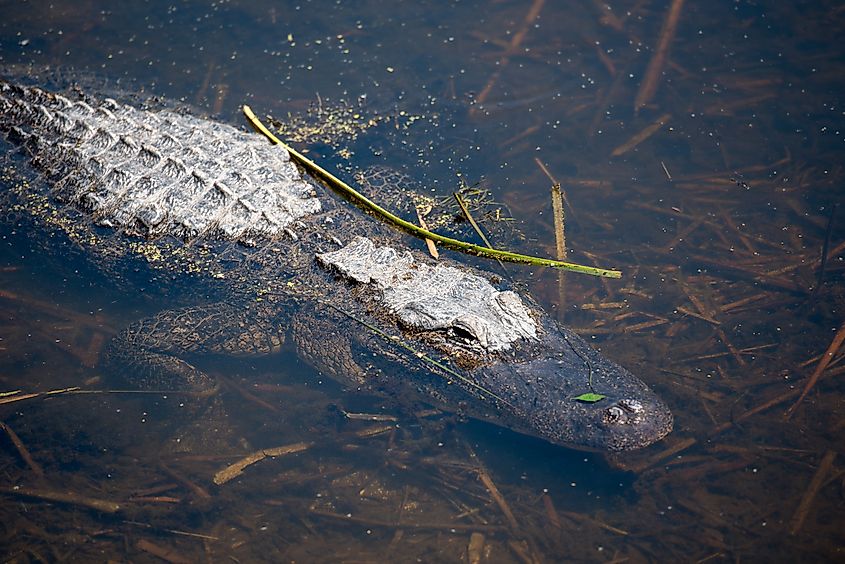
The Guadalupe River is one of the Lone Star State’s best rivers for outdoor recreation, flowing more than 230 miles from Texas Hill Country to the Gulf Coast. The upper section is home to Guadalupe River State Park, a popular destination about 40 miles north of San Antonio, where you can swim, fly-fish, tube, and canoe beneath scenic limestone cliffs. Like many Texas rivers, the chance of spotting alligators rises farther downstream. Still, numerous sightings of the ancient reptiles are reported in or near the river, thanks mainly to the many people who use it recreationally.
Father south, the river widens into the Guadalupe River Delta before emptying into San Antonio Bay, a haven for waterfowl, wading birds, and alligators. San Antonio Bay borders the Aransas National Wildlife Refuge, where your chances of catching a glimpse of a gator increase dramatically. The Aransas National Wildlife Refuge was established in 1937 to protect 400 species of migratory birds, including whooping cranes, as well as Kemp's Ridley sea turtles, and a healthy population of American alligators.
San Bernard River
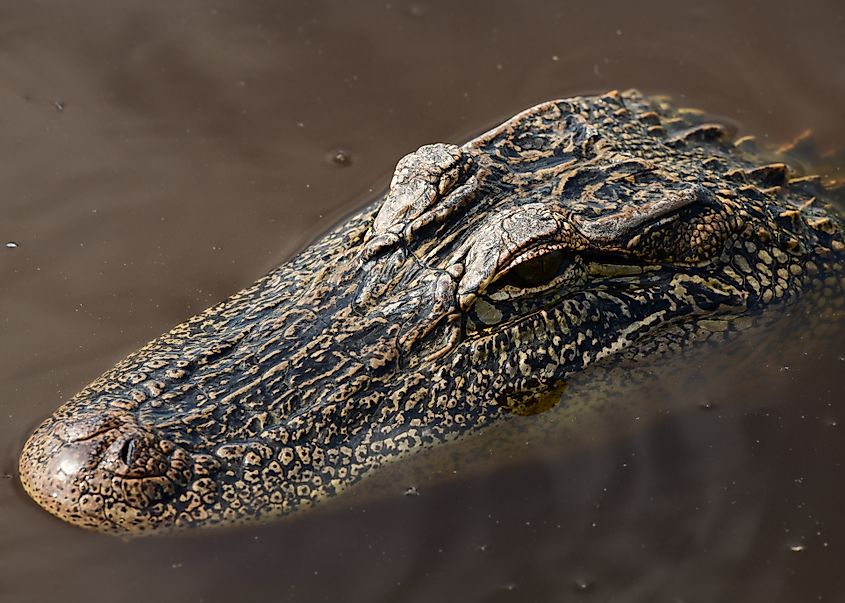
A hidden gem of the Texas Gulf Coast, the San Bernard River runs about 120 miles through bottomland hardwood forests, wetlands, and marshes, from New Ulm in Austin County to the Gulf of Mexico near the beach town of Freeport. There is no shortage of prime alligator viewing spots along the river, such as the 45,000-acre San Bernard National Wildlife Refuge, where you will also find herons, roseate spoonbills, and, in winter, snow geese and sandhill cranes.
Connected to the San Bernard River system by wetlands and bayous, the Brazoria National Wildlife Refuge offers even more gator viewing opportunities, especially along the Big Slough Auto Tour Loop near Cox Lake. If you feel like exploring the refuge on foot, the Big Slough Trail provides a scenic hike through the sanctuary, complete with boardwalks and an observation platform from a safe distance overlooking the marsh. Just remember to stay on the marked trails.
Gator Spotting on Texas Rivers
If you want to see alligators in Texas, just follow the rivers. From the cypress swamps of the Trinity to the coastal marshes of the San Bernard, these prehistoric reptiles thrive in the Lone Star State’s wetlands, bayous, and bottomlands, especially the closer you get to the Gulf of Mexico. Keep in mind that while alligators are a thrilling sight, they’re also wild animals. So if you are lucky enough to see one, always keep a safe distance and never feed or approach them. Respecting their space helps protect both you and the gators, ensuring Texas’s riverways remain a sanctuary for the American alligator for generations to come.
